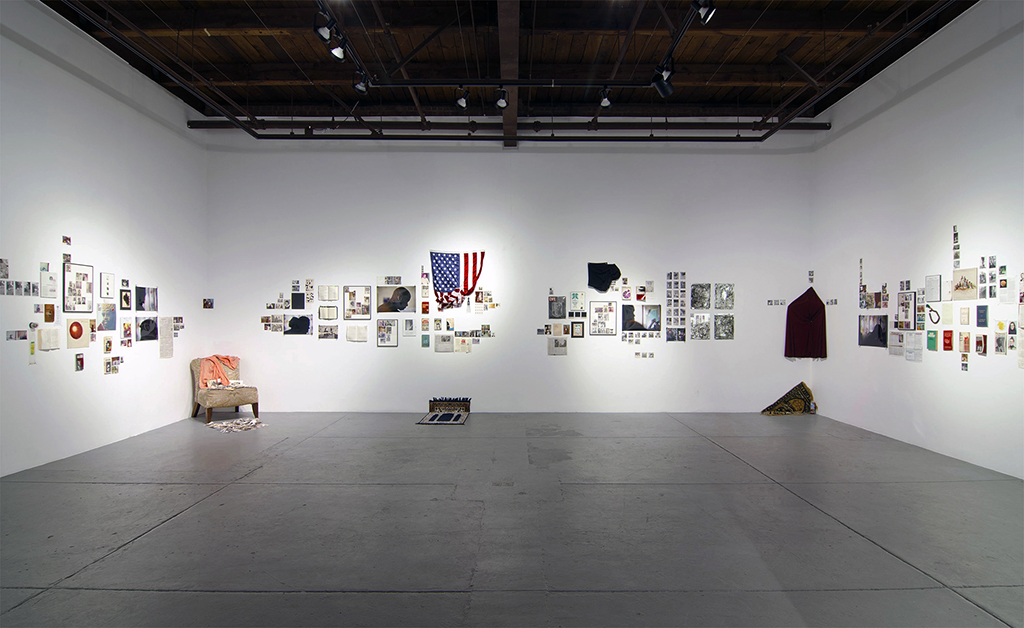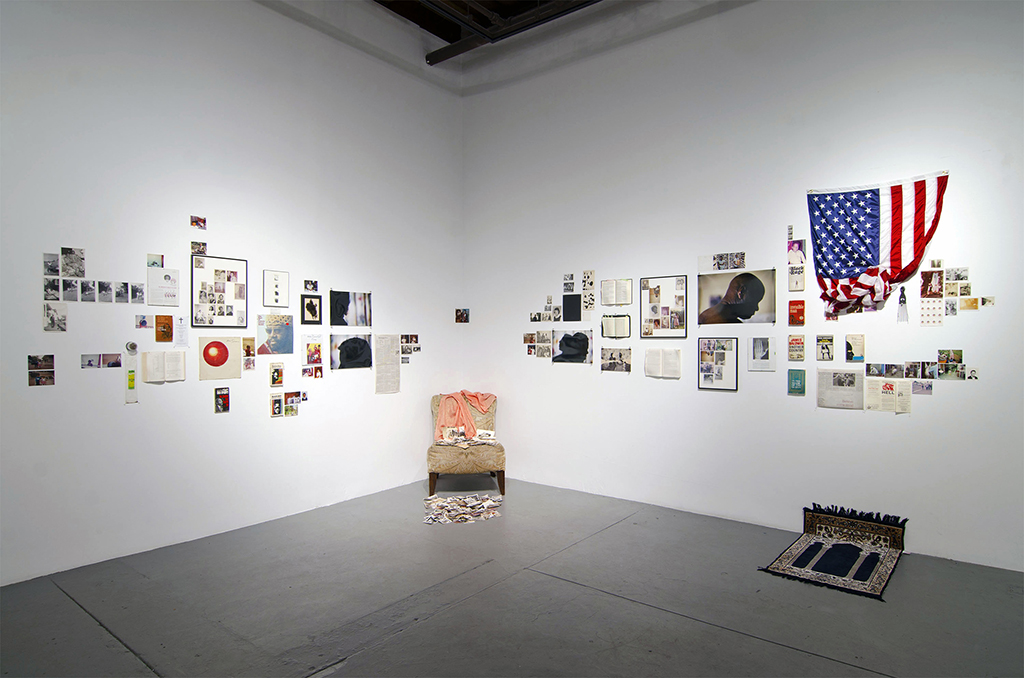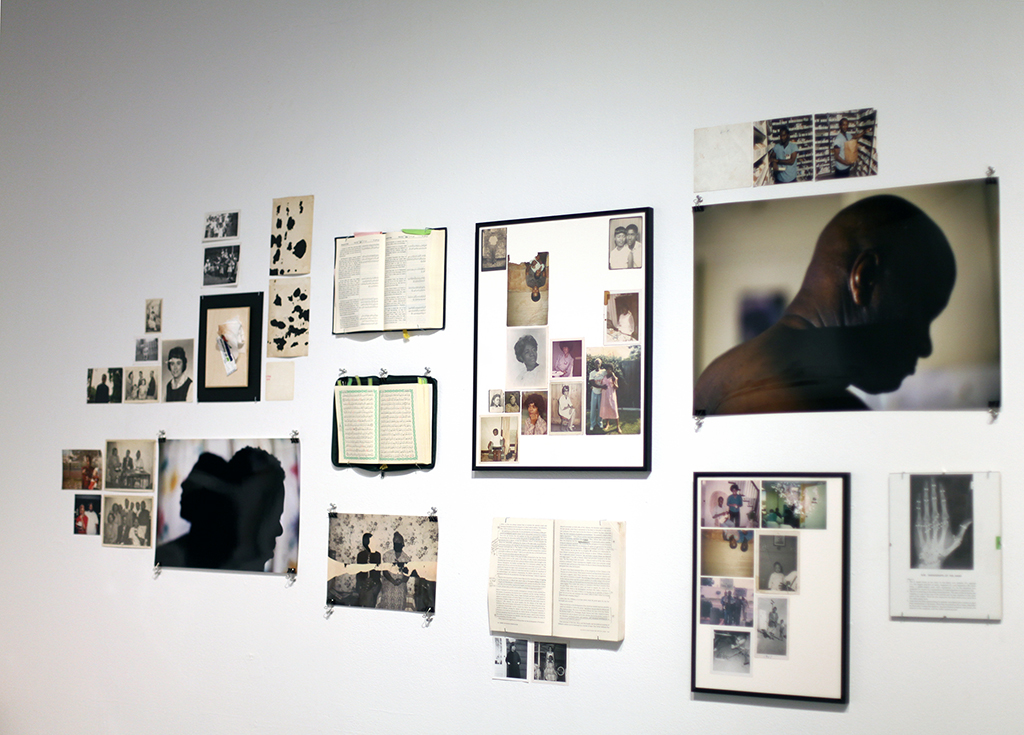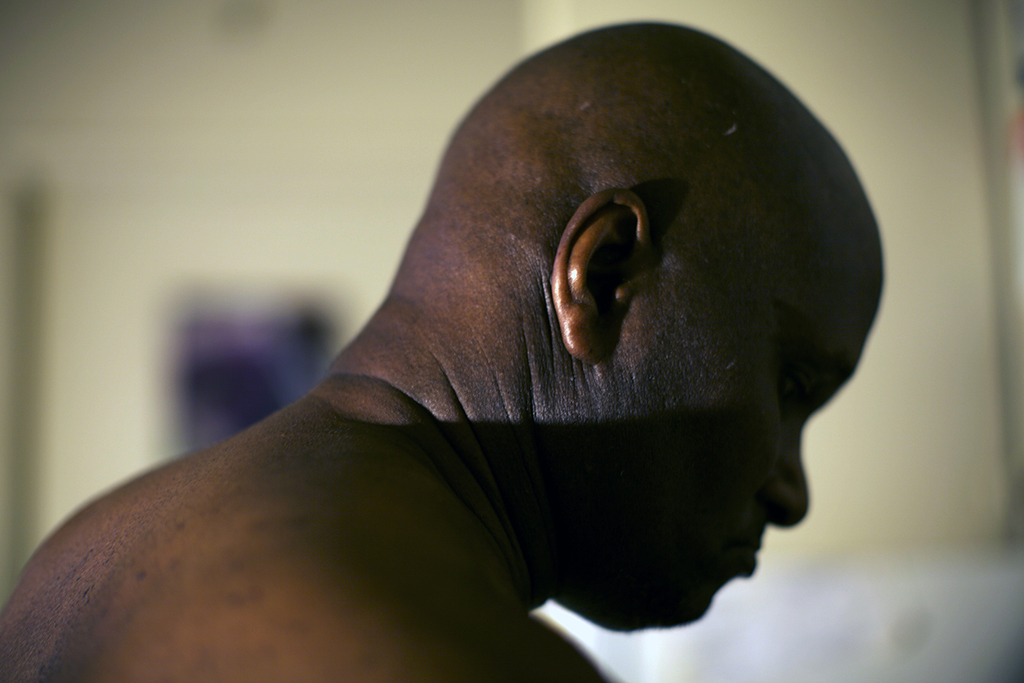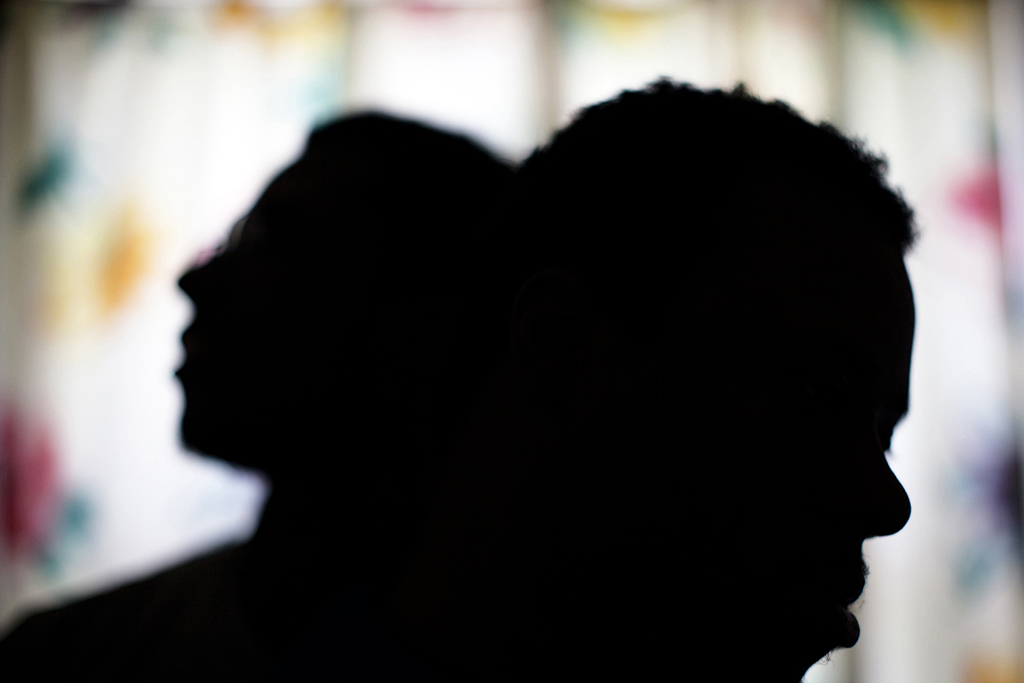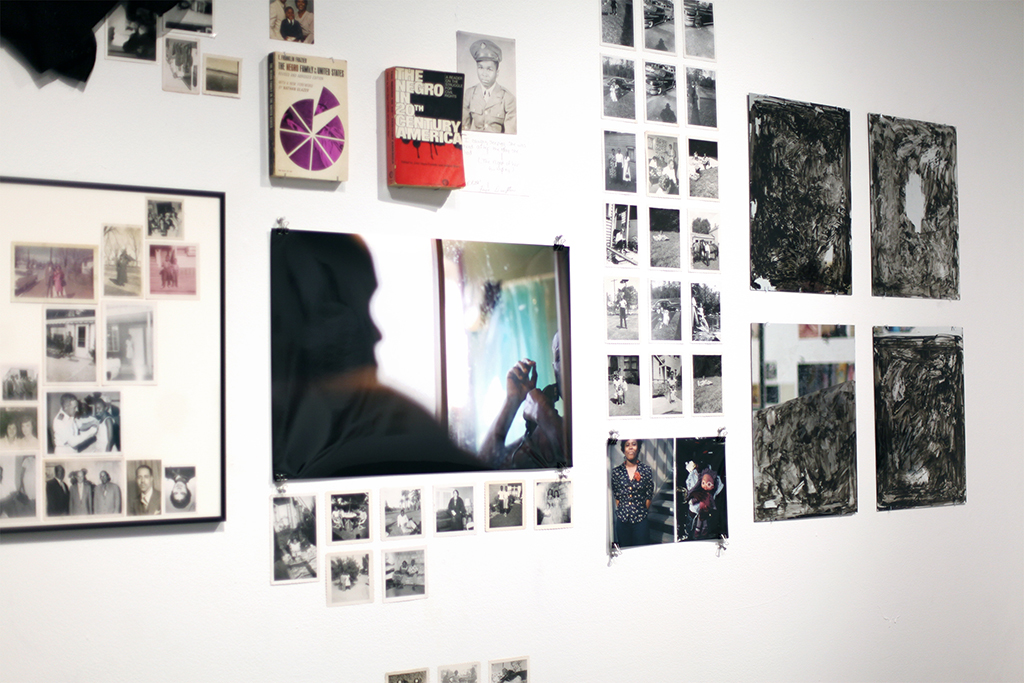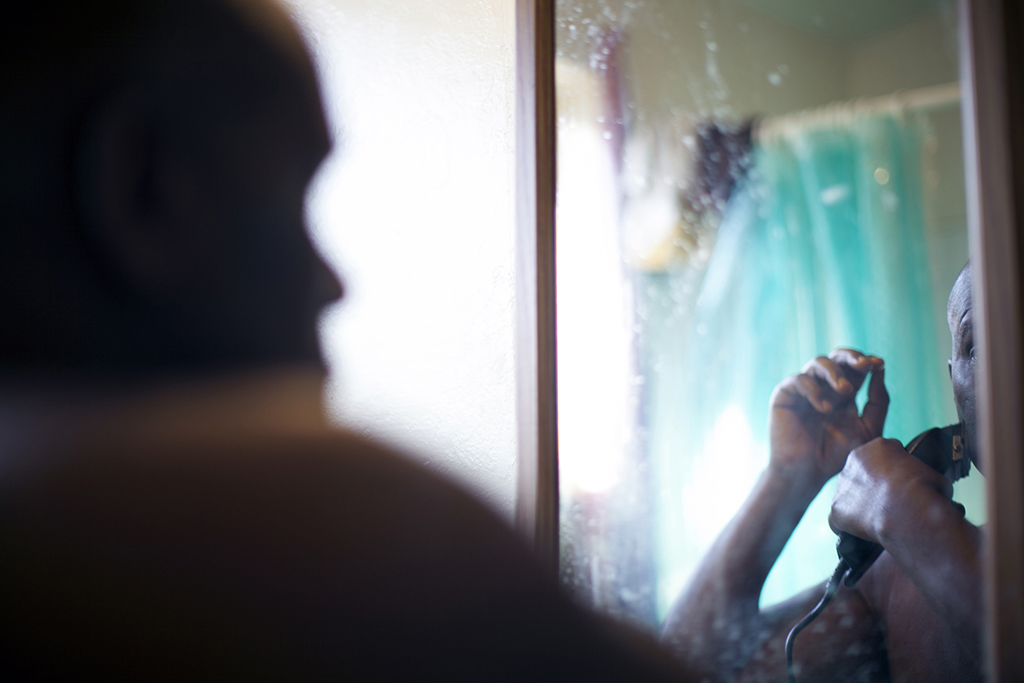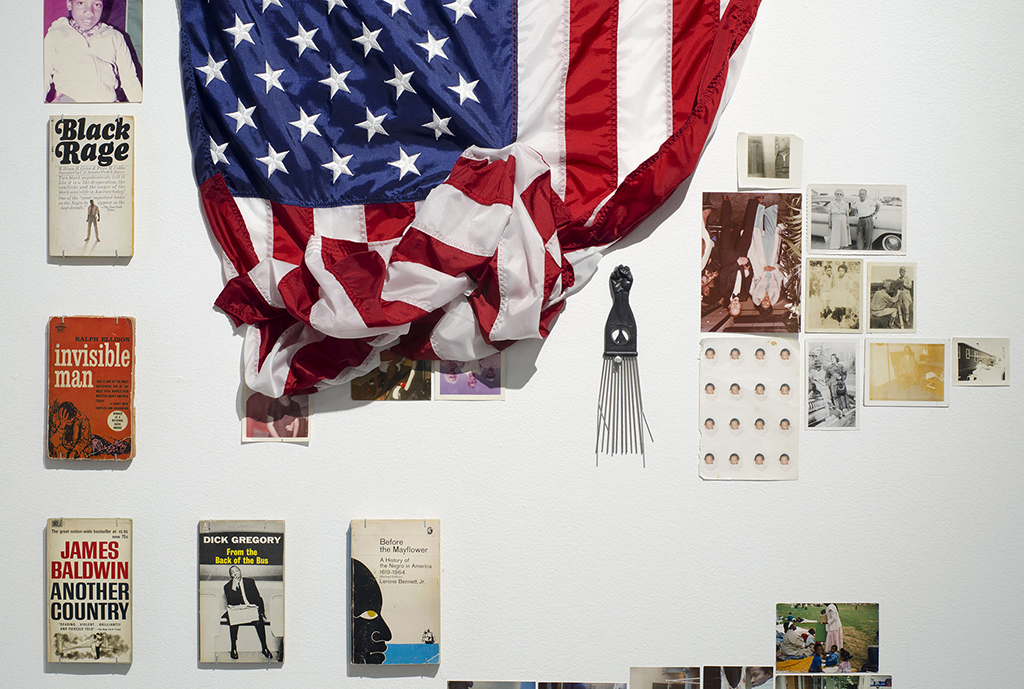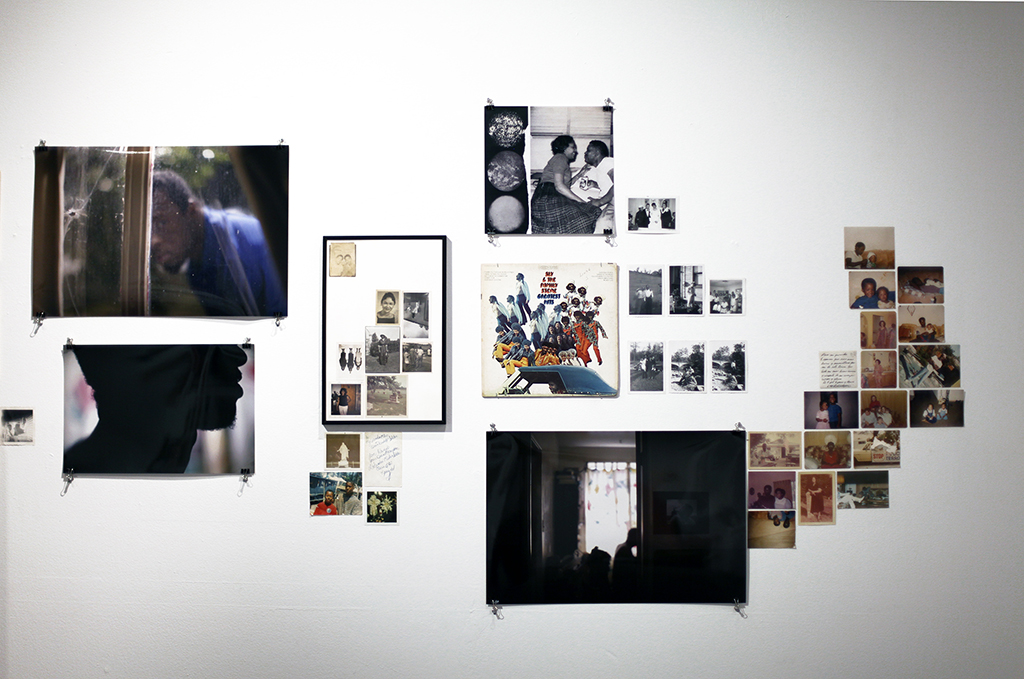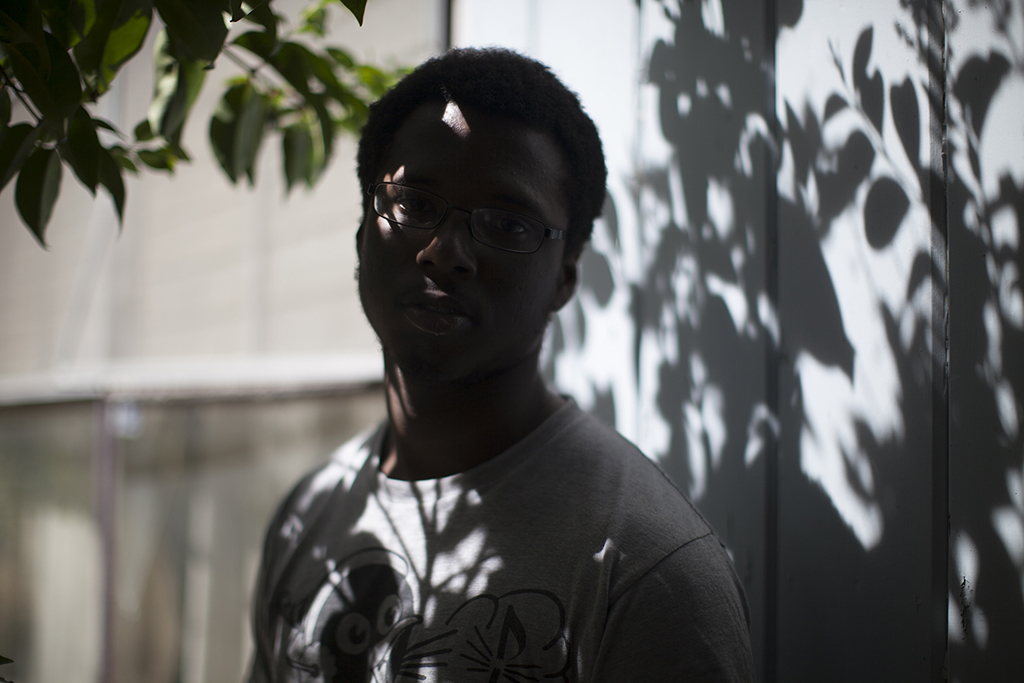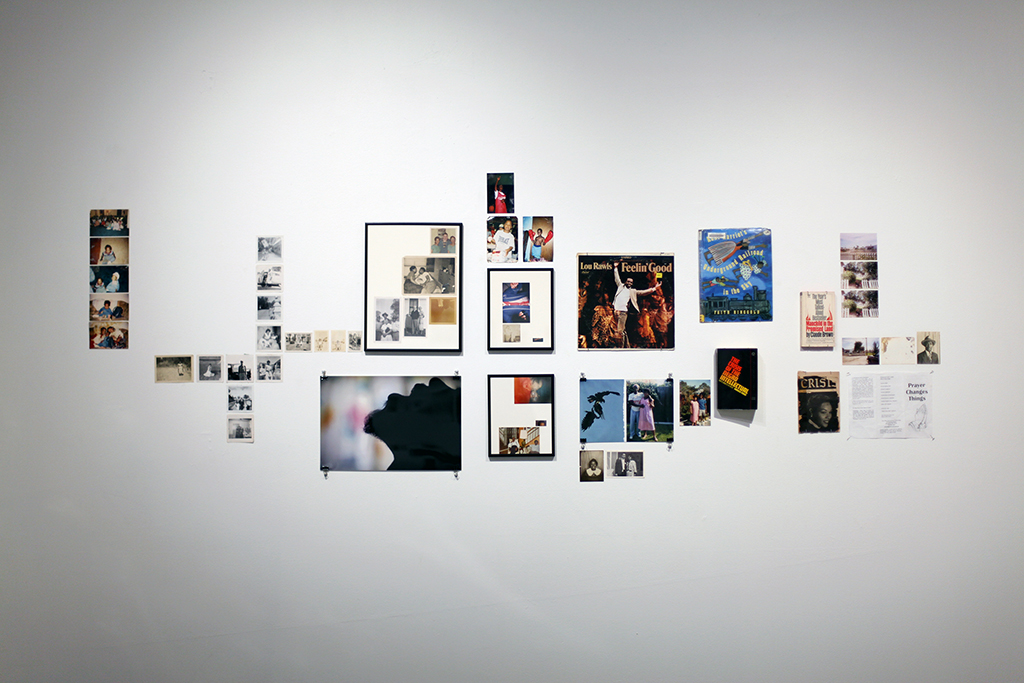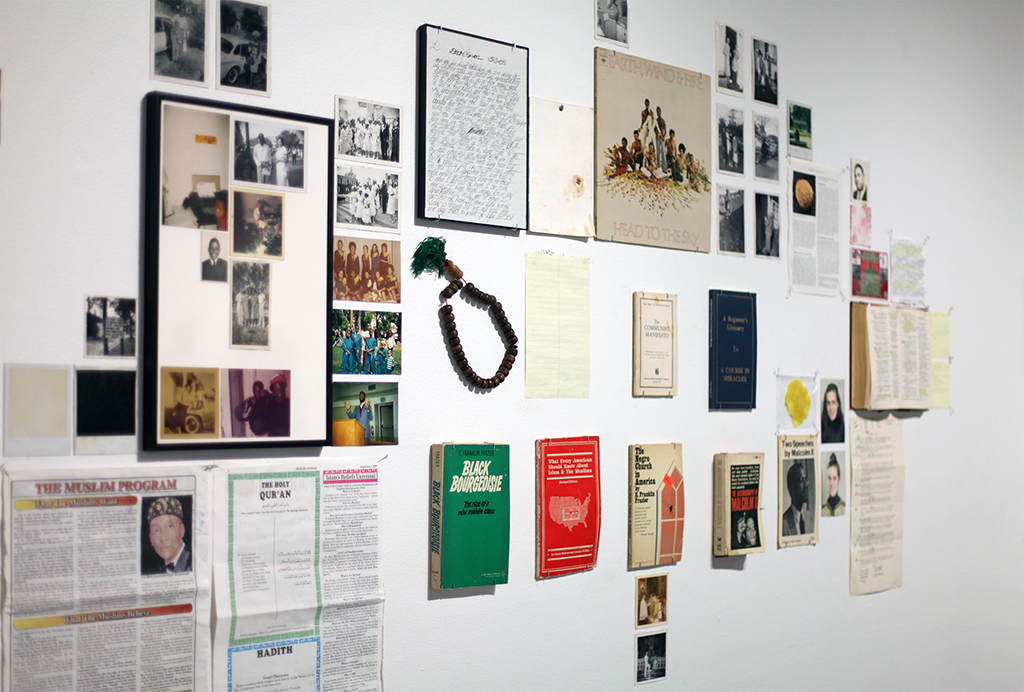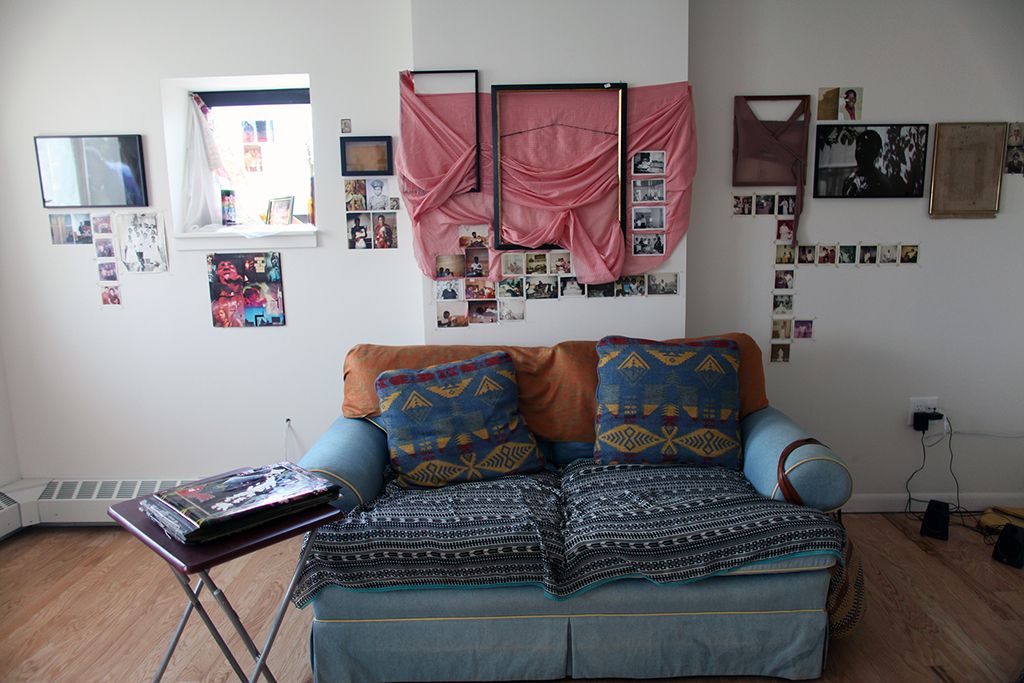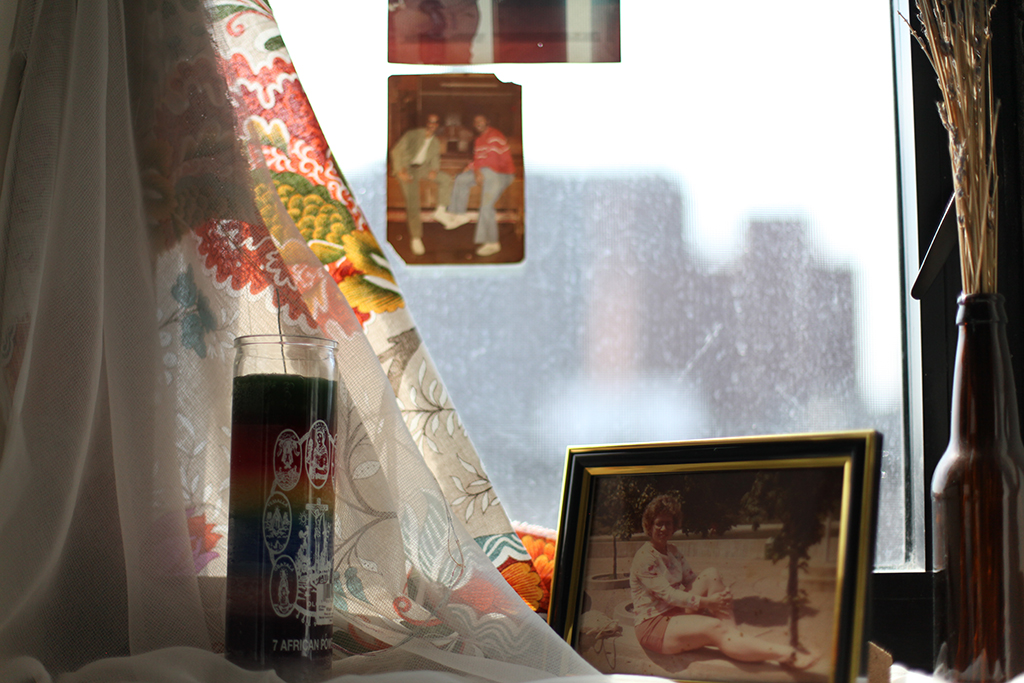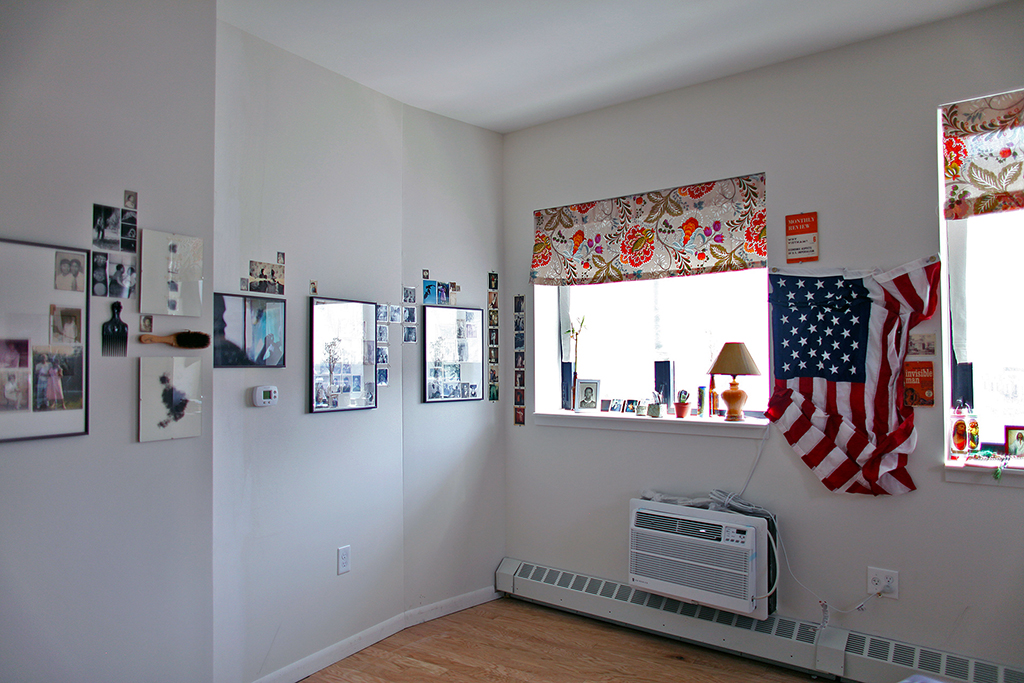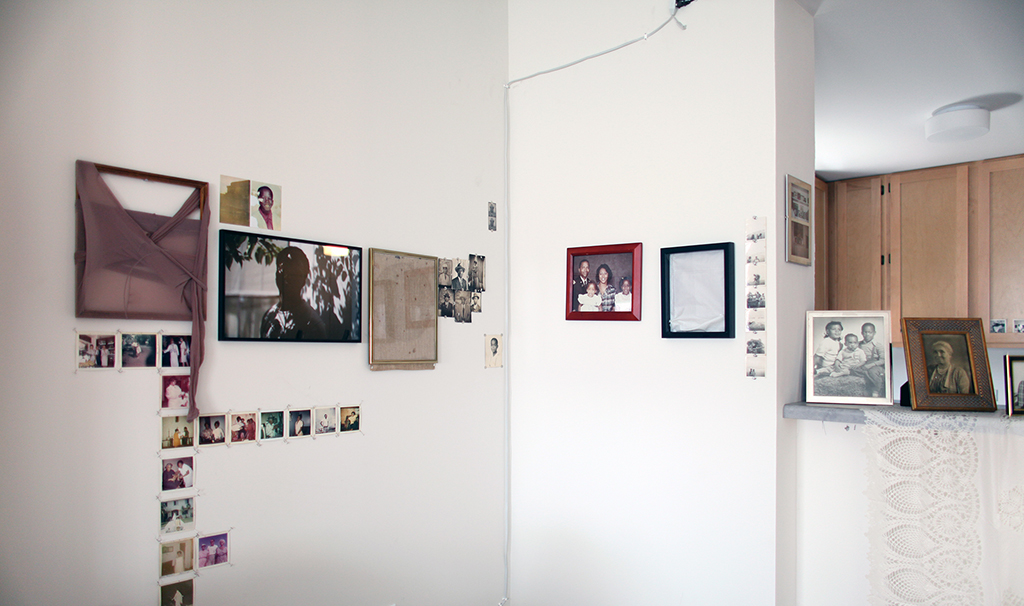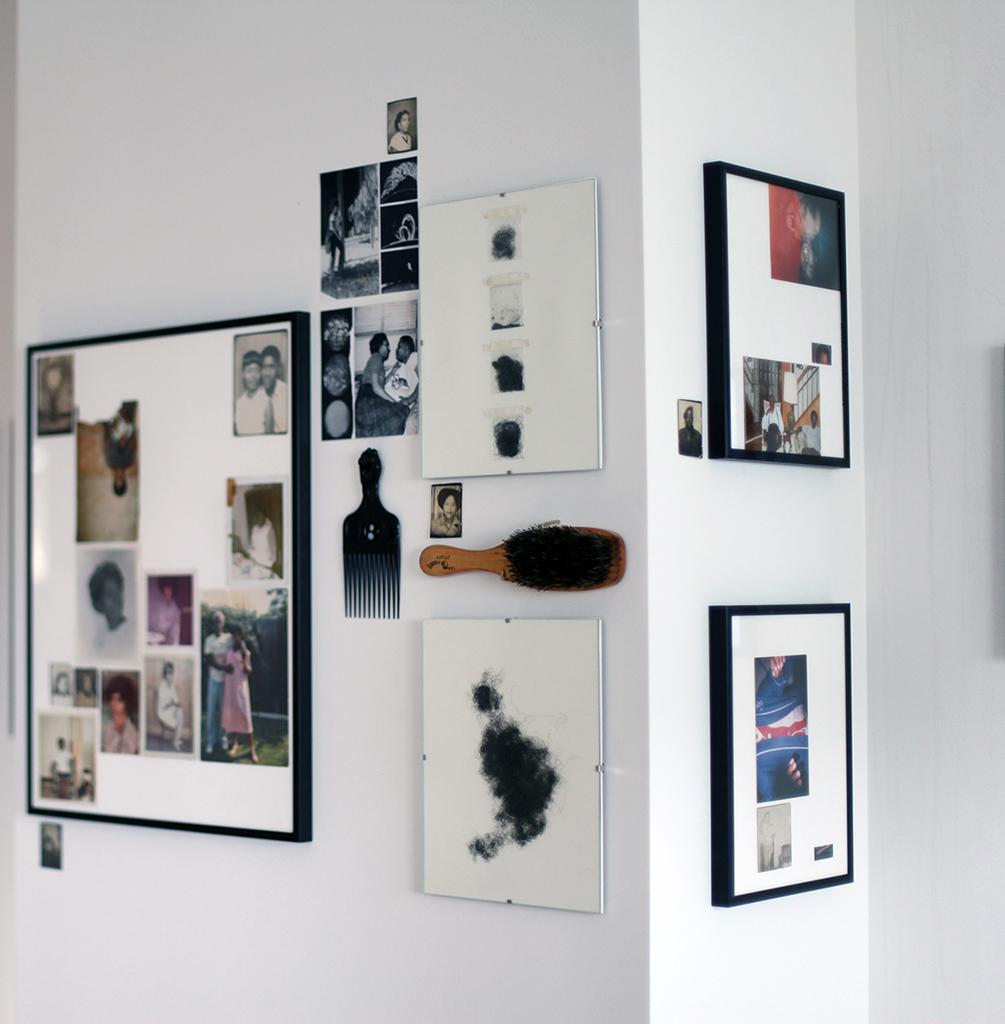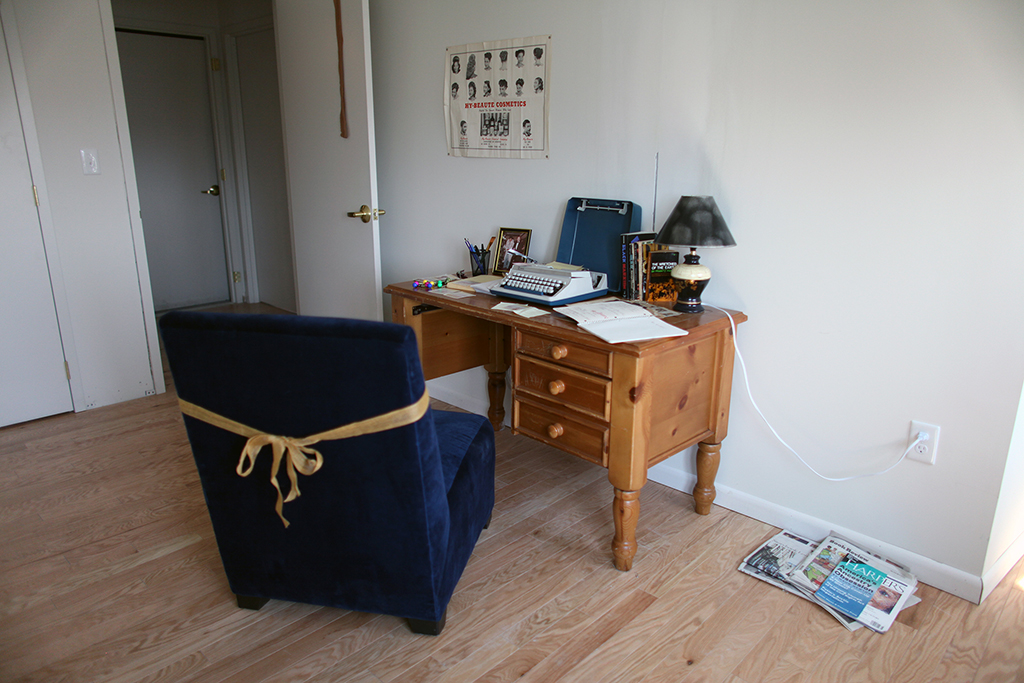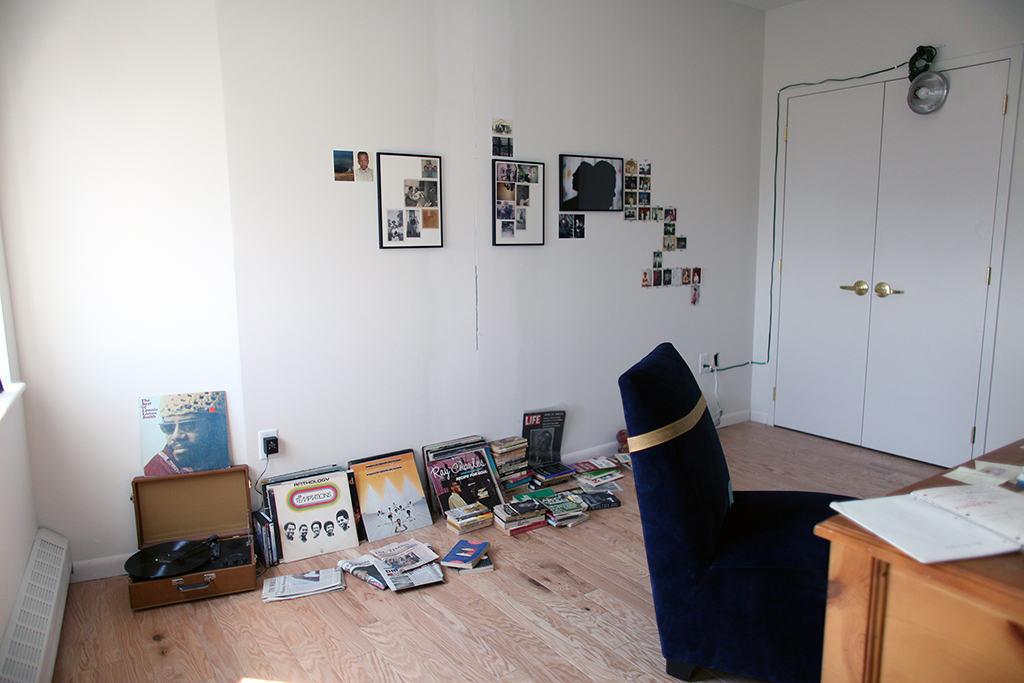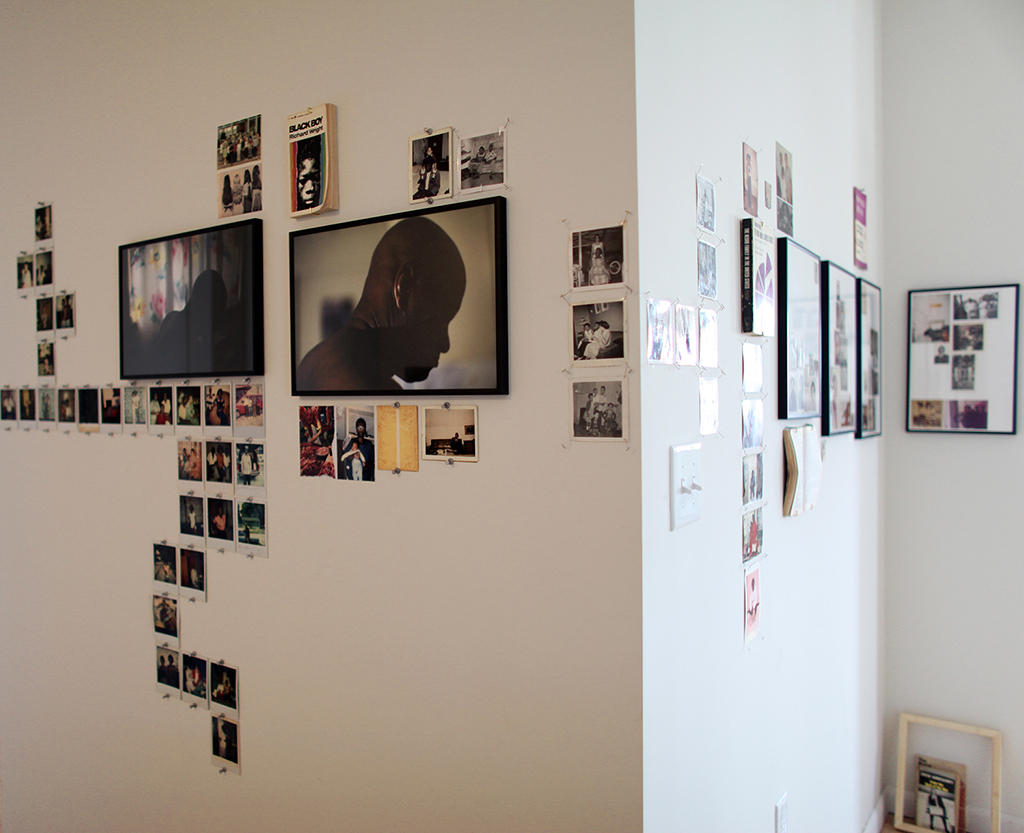What is my work about?
In 1998, my family was displaced and we became homeless. As an artist-archivist, my work attempts to reconcile my lived experiences of homelessness and displacement through archival installations that map conversations between found material culture, ephemeral historical residue, personal objects, self-authored books and original photography. I engage with my work as a material-based historian who mines and excavates from the past. I displace objects from their original context and reorganize them into new transhistorical contexts, a discursive violence that mirrors the violence my family experienced when we were displaced from our first home and made to make sense of ourselves in a new spatial context. My archival installations which occupy both traditional galleries spaces as well as intimate domestic spaces attempt to interrupt and intervene on the institutional archive to provide discursive territories for the mapping of histories that are buried in footnotes or margins.
Artist Statement
In 1998, my family was displaced and we became homeless. For ten years, our bodies and memories were fragmented across shelters, motels and the homes of relatives.
As an artist-archivist, my work attempts to reconcile my lived experiences of homelessness and displacement through archival installations that map conversations between found material culture, ephemeral historical residue, personal objects, self-authored books and original photography.
I engage with my work as a material-based historian who mines and excavates from the past. I displace objects from their original context and reorganize them into new transhistorical contexts, a discursive violence that mirrors the violence my family experienced when we were displaced from our first home and made to make sense of ourselves in a new spatial context. At 12, I began to collect and organize objects into loosely rational taxonomies in an attempt to impose order on an otherwise chaotic life of precarious housing. This ritual and performance of mining that began as a coping mechanism in response to the spatial trauma of displacement has now become my explicit art practice.
I mine for fragments from sources such as my mother’s jewelry box, my father’s textbooks, dumpsters, train station floors, institutional archives, eBay, flea markets, spam email folders, infomercials, televangelists mailing lists, academic journals, obscure poetry etc. These excavated objects operate as ghosts—the past showing up in the present refusing to leave and begging for another temporal stage on which to perform. Haunted by these displaced objects, I invite them into installation spaces that range from traditional galleries to intimate domestic spaces to script new narrative possibilities, to listen for the echoes and to consider the possibilities of the archive. I am interested in the archive as a site of agency to explore our active and passive roles in both the production and consumption of hermetic private histories as well as larger public histories.
The bulk of my work has been articulated through an ongoing and iterative series called No Instructions for Assembly which is an archival installation created through a dense network of objects, images and texts that comment of the meaning of home, the politics of displacement and the elasticity of the archive.
The first iteration — No Instructions for Assembly, I (2013) creates an ephemeral archive of my family within a traditional gallery space through the juxtaposition, layering and echoing of over 600 individual found and personal objects as well as original photography and text. The installation engaged with spatial registers such as taxonomy grid display to explore the tension between the archive’s promise of narrative order and the ultimate betrayal of this archival promise as I came to terms with the complexity of memory and the impossibility of assembling a single corpus of memory from the fragments. In the second (2013) and third (2014) iterations of No Instructions for Assembly, I installed excerpts in compressed spaces that allowed the audience to be more intimately engaged and to participate through the creation of their own miniature archival installations.
In the fourth iteration — No Instructions for Assembly, Activation IV (2014), I designed an intimate domestic space by recreating my family’s home in a two-bedroom apartment in Sugar Hill neighborhood of Harlem within a new housing complex for low-income families and the previously homeless. Composed of over 1,400 individual objects including found and personal objects as well as original photographs, the space also included an audio loop of my father telling stories about our family as well as his childhood. This archival installation became a living entity where human engagement with the archival installation activates the environment. The viewer becomes archivist and performer as they were invited to map their own histories by installing objects, photographs, letters and other material culture of their own in a way that either establishes 2 a relationship to the existing materials or begins a new dialogue. This process moves away from audience participation to audience collaboration, activation and curation to experiment with democratic archiving and storytelling where the space is no longer created by an institution that dictates what stories are told and the lens through which they are told, but rather a space where all stories have a home. The archival installation is a space to interrupt and intervene on the institutional archive to provide discursive territories for the mapping of histories that are buried in footnotes or margins.
CV
SOLO EXHIBITIONS
2013 No Instructions for Assembly, Real Art Ways | Hartford, CT
GROUP EXHIBITIONS
2015
Made in Woodstock VII, Center of Photography at Woodstock | Woodstock, NY
2014
i found god in myself, La Maison d’Art | New York, NY
texttexttext, Woman Made Gallery | Chicago, IL
Wish You Were Here 13, A.I.R Gallery | Brooklyn, NY
No Longer Empty: If You Build It, Broadway Housing Communities | New York, NY
Afrofuturist Affair: Time Travel Convention, Yell Gallery | Philadelphia, PA
Workspace Artist-in-Residence Exhibition, The Center for Book Arts | New York, NY
The Center for Book Arts Annual Benefit, The Center for Book Arts | New York, NY
The Gateway Project Annual Benefit, Gateway II | Newark, NJ
2013
Annual Salon Exhibition, Active Space | Brooklyn, NY
Medium/Rare: 2013 Brooklyn Museum Staff Exhibition, Brooklyn Museum | Brooklyn, NY
Curate NYC, curated by Lizzetta Collins | Manager, Visual Arts Program, Museum of the African Diaspora (online)
Curate NYC, curated by Wim van Sinderen | Senior Curator, The Hague Museum of Photography (online)
Curate NYC, curated by Sarah Newman | Senior Curator, Corcoran Gallery of Art (online)
Etiquette for Lucid Dreaming, Project for Empty Space, Gateway II | Newark, NJ
NUTUREart Benefit, Bernarducci Meisel Gallery | New York, NY
Exit Strata Presents “Exhibit A: Re/Production”, Launch Pad | Brooklyn, NY
MoMA PopRally: Abstract Currents—An Interactive Video Event, MoMA | New York, NY
2012
Multiples, Bluestockings | New York, NY
LIVE! The Well & Often Reader, La MaMa Experimental Theater | New York, NY
Everything is Index, Nothing is History: A Recession Arts Show, Invisible Dog Gallery | Brooklyn, NY
The Societies of Fine Art and Collection, Five Myles Gallery | Brooklyn, NY
Black Vernacular, Dwayne Rodgers | New York, NY
There’s A Story Here, St. Joseph’s College Arts Council | Brooklyn, NY
2011
Fotoweek DC Thumbnail Show, Fotoweek Central | Washington, D.C.
Collective (R)evolution, The Fridge | Washington, D.C.
Faith on the Street, New York Public Library | New York, NY
2010
Love: The Good, The Bad, The Abstract, The Gallery at Harlem PoP | New York, NY
For Colored Girls Only, Joyce Gordon Gallery | Oakland, CA
2009
The Saartjie Project’s ‘Homecoming’ Celebration, Capitol Hill Arts Workshop | Washington, D.C.
Left Forum: Turning Points, Pace University | New York, NY
2007-08
Fourth Annual Fulbright Art Exhibit, Institute of International Education | San Francisco, CA
Excavating Motherhood, Brooklyn Artist Gym | Brooklyn, NY
Photo Voices: Youth and HIV/AIDS, Artist Proof Studio | Johannesburg, South Africa
AWARDS, GRANTS, RESIDENCIES
2014 | Guest Teaching Artist, Working Classroom | Albuquerque, NM
2014 | Artist-in-Residence, Vermont Studio Center | Johnson, VT
2013 | Create Change Professional Development Fellow, The Laundromat Project | New York, NY
2013 | Juror, The Center for Photography at Woodstock A-I-R | Woodstock, NY
2013 | Artist-in-Residence, The Center for Book Arts | New York, NY
2013 | Visual Artist Network Exhibition Residency, Real Art Ways | Hartford, CT
2013 | Visual Artist Network Community Fund Expansion Grant, Real Art Ways | Hartford, CT
2012 | STEP UP Emerging Artist Award, Real Arts Ways | Hartford, CT
2012 | Artist-in-Residence, Center for Photography at Woodstock | Woodstock, New York
2006-2007 | United States Amy S. Biehl Fulbright Research Grant | Johannesburg, South Africa
ARTIST TALKS, LECTURES, PANELS
2014 | Artist, Triple Consciousness: “Mythologies of the Diva” | Brooklyn Museum: Elizabeth A. Sackler Center for Feminist Art | Brooklyn, NY
2014 | Artist, 2013 Workspace Artist in Residence Artist Talk, The Center for Book Arts | New York, NY
2014 | Curator, If We Came From Nowhere Here, Why Can’t We Go Somewhere There? | Vivid Solutions Gallery | Washington, D.C.
2014 | Artist, Working in Communities as Artists | Queens Museum, Open Engagement: Life/Work Conference | Queens, NY
2014 | Artist, No Instructions for Assembly: Case Studies in Radical Archiving | New York University: Asian/Pacific/American Institute | New York, NY
2013 | Artist, Muse Fuse’s Annual Image Share Night | NUTUREart | Brooklyn, NY
2013 | Panelist, Project for Empty Space: Informed by the City | Christie’s Education | New York, NY
2013 | Artist, No Instructions for Assembly Artist Talk | Real Art Ways | Hartford, CT
2013 | Artist, Women Love the World: Art and Social Change Artist Talk | LaunchPad | Brooklyn, NY
2013 | Panelist, SPOOK Magazine Issue #2 | MoCADA | Brooklyn, NY
2012 | Panelist (alongside Shlomit Dror, Research Associate at the Newark Museum and Kalia Brooks, Adjunct Professor, Photography and Imaging Department, Tisch School of the Arts, NYU), Residency Unlimited: Sonia Louise Davis — Recent Work | Residency Unlimited | Brooklyn, NY
2012 | Panelist, We + Design = Collaborative Design | Allied Media Conference | Detroit, MI
2012 | Guest Speaker, Islam, Race, and Gender in America | Florida International University
2010 | Artist, Love: The Good, The Bad, The Abstract Artist Talk | The Gallery at Harlem PoP | New York, NY
2009 | Panelist, Media Access for Prisoners | Critical Resistance Conference | Oakland, CA
2009 | Facilitator, Documentary Photographer Caucus | Allied Media Conference | Detroit, MI
2008 | Panelist, Media Access for Prisoners | Allied Media Conference | Detroit, MI
SELECTED BIBLIOGRAPHY/PRESS
“Art Breaks the Ice in Sugar Hill”, Omo Misha, ArtSlant, August 2, 2014
“If You Build it in Harlem”, Alix Taylor, Hyperallergic, July 30, 2014
“Unlikely Tenants Filling a Neighborhood Vacancy: ‘If You Build It,’ a Local Show Celebrating Local Art”, Holland Cotter, New York Times, July 10, 2014
“‘If You Build It’ Celebrates Harlem Art and Community”, Jessica Lynne, Art-I-Curate, July 3, 2014
“No Longer Empty’s ‘If You Build It’ Opens in Sugar Hill: Group Holds Exhibits In Places That Rarely See Contemporary Art”, Jessica Dawson, Wall Street Journal, June 25, 2014
“Black Photography Collective MAMBU BADU Mounts its Ambitious First Exhibit”, Carolyn Lang, Washington City Paper: Arts Desk, June 20, 2014
“If We Came From Nowhere Here, Why Can’t We Go Somewhere There?”, Christina Cauterucci, Washington City Paper, May 15, 2014
“Kameelah Janan Rasheed’s ‘No Instructions for Assembly’ on Display at Real Art Ways in Hartford”, Michael Hamad, Los Angeles Times, July 22, 2013
“Other Histories: An Interview with Kameelah Janan Rasheed”, Darren Campion, Paper Journal, June 20, 2013
“Artist Interview: Kameelah Janan Rasheed of Everything is Index, Nothing is History”, Recession Art, May 5, 2012
SELECTED ONLINE & PRINT PUBLICATIONS
Transition: An International Review*, SPOOK*, SF MoMA Blog, Hyperallergic LABS!, Operating System (formally Exit Strata), Life & Times, F-Stop Magazine, Sokwenele (Zimbabwe), ITCH Magazine (South Africa)*, Socialist Worker (Britain)*, Liberator Magazine*, UNLTD Magazine, Urban Cusp, Magazine, Persephone Magazine, Living Unchained, Tikkun Magazine, Society of American Archivists (Archives & Archivists of Color Roundtable)
*denotes print edition
TEACHING ARTIST EXPERIENCE
Brooklyn Museum
2014 | Instructor, “Say it Loud!”
in connection with the exhibition Witness: Art and Civil Rights in the Sixties
2013 | Instructor, “Painting with Objects”
in connection with the exhibition Wangeci Mutu: A Fantastic Journey and African Innovation Gallery
2013 | Instructor, “Real Life: the Art of Social Documentary”
in connection with the exhibition LaToya Ruby Frazier: A Haunted Capital
2012 | Instructor, “Forget Picture Perfect”
in connection with the exhibition Mickalene Thomas: Origin of the Universe
Visiting Teaching Artist
2014 | Teaching Artist, Found Photo Collage and Installation, I & II | Working Classroom | Albuquerque, NM
2013 | Teaching Artist, Real Art Ways Neighborhood Studios | Greater Hartford Arts Council | Hartford, CT
2013 | Teaching Artist, The Object Speaks | Greater Hartford Academy of the Arts | Hartford, CT
2013 | Teaching Artist, Collage & Narrative Disruption | Brooklyn Friends School | Brooklyn, NY
CURATORIAL EXPERIENCE
2014 | If We Came From Nowhere Here, Why Can’t We Go Somewhere There?, Vivid Solutions Gallery | Washington, D.C (co-curator)
2013 | The Finding Aid: Black Women at the Intersection of Art and Archiving, Schomburg Center for Research in Black Culture | New York, NY (co-curator)
PUBLICATIONS
Self-Published Conceptual Books and ‘Zines
2014 | DISPUS: The Early Field Notes, Issue 1 Volume I
2014 | Sin is an Amino Acid Cluster in the Eye: A Recyclopedia of Evangelical Tracts and Biblical Extensions
2014 | How to Time Travel Using Your Mother’s Hair, a Found Photograph & Ginger Root
2014 | Locations and Instructions for Hiding Your Shame
2014 | How to Suffer Politely (And Other Etiquette for the Lumpenproletariat)
Anthologies
2013 | Mambu Badu: Issue 2 Volume I, Digital (co-published with other collective members – Danielle Scruggs and Allison McDaniel)
2011 | Mambu Badu: Issue 1 Volume I, Digital (co-published with other collective members – Danielle Scruggs and Allison McDaniel)
Published Writing
2014 | On Loneliness: A Reading List, Longreads
2014 | Black Lives: Worthy of Elaboration, A Conversation with Rachel Kaadzi Ghansah, Gawker
2014 | A Conversation with Roxane Gay, Specter Magazine
2014 | A Conversation with Daniel José Older, Specter Magazine
2013 | “All Things Considered”: An Interview with Kiese Laymon, Specter Magazine
2013 | “Beautifully Disturbing”: An Interview with Wendy C. Ortiz, Specter Magazine
2013 | “Here’s to the Weird”: An Interview with Victor LaValle, Specter Magazine
2013 | A Vessel for Peace: An Interview with Writer Ocean Vuong, Well & Often Press
2012 | Interview with Speculative Fiction Writer Nnedi Okorafor, Specter Magazine
2012 | The Love Child of Frida Kahlo and DMX: An Interview with Safia Elhillo, Well & Often Press
2012 | To Be Vulnerable and Fearless: An Interview with Writer Warsan Shire, Well & Often Press
2011 | Interview with Dread Scott / “Make revolutionary art to propel history forward … confront the world as it is and radically dream about how it could be different.”, Liberator Magazine
2011 | “Lines of Bad Grammar” in I Speak for Myself: American Women on Being Muslim, White Cloud Press
COMMUNITY-BASED PROJECTS
2014 – present | Founder, DISPUS – The United States Department of Inquiry on Social Problems and their Urgent Solutions
DISPUS, the U.S. Department for Inquiry on Social Problems and their Urgent Solutions is a fictional rogue department of the U.S. government. Though facilitated by me, this organization is youth-powered and takes on several iterations that revolve around collecting and activating data about local social problems and their solutions. In the first pilot, six youth enrolled in my course, SAY IT LOUD! at the Brooklyn Museum interviewed and photographed Brooklyn residents about both social problems and their solutions. The fruits of their work debuted as a photo and text installation with a ‘zine of their findings at the Brooklyn Museum on June 8, 2014.
2012 – present | Founder & Archivist, Mapping the Spirit
Mapping the Spirit is an archival storytelling project that charts the religious and spiritual articulations of people of African descent in North America. This transmedia project spans the mediums of photography, audio, text installation and mapping. This archive is concerned with carving out space to elaborate on the religious and spiritual depth of the Black community in the United States.
RELATED EXPERIENCE
2014 | Volunteer Docent, Morbid Anatomy Museum
2014 | Field Day Cultural Organizing Mentor – Bedford Stuyvesant, The Laundromat Project
2014-present | Art Editor, SPOOK Magazine
2011-2014 | Senior Editor – Art & Interviews, Specter Magazine
2010-present | Co-founder & Creative Director, MAMBU BADU Photography Collective
COLLECTIONS
• Center for Photography at Woodstock’s Permanent Collection / Extended Loan at Samuel Dorsky
Museum of Art | New Paltz, NY
• Private Collections
EDUCATION
2008 | Stanford University, Ed.M Secondary Education (History) | Stanford, CA
2006-07 | University of Witwatersrand, U.S. Fulbright Scholar-Forced Migration Studies | Johannesburg, ZA
2006 | Pomona College, BA Africana Studies and Public Policy (Self-Designed) | Claremont, CA
2005 | University of Cape Town, African Studies | Cape Town, South Africa (Study Abroad)

